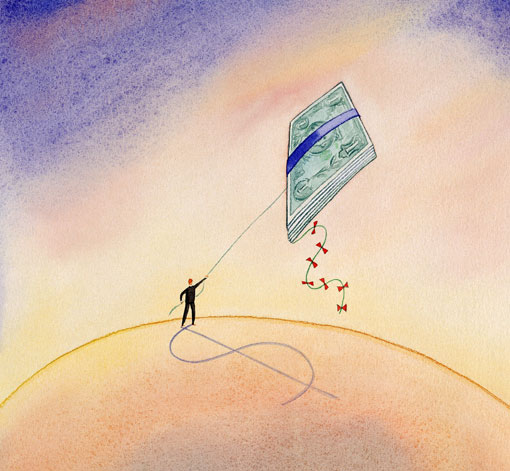For the month of August, a series of guest posters will be filling in on DWL with daily posts. Today’s posts come to you from David Airey of davidairey.com and Logo Design Love. For more from David, be sure to follow him on Twitter and check out his new book, Work for Money, Design for Love. Enjoy!
Surrey-based copywriter Mike Reed went freelance after previously founding a small agency called Other, where he worked as creative director. It didn’t take Mike long to get freelance work from long-standing contacts, and he knew what he wanted to do in the longer term: work with the best branding and graphic design consultancies around.

“I wrote, and, I confess, designed a mailshot, which was a set of postcards each bearing an obscure word from the Oxford English Dictionary. ‘Absquatuluate,’ ‘bathykolpian,’ ‘fanfaronade,’ that sort of thing. These were ‘free introductory words’ for my targets, with the promise of more exciting language in exchange for money.
“Anyway, it worked. I got in to see a few of my favorite design consultancies, Hat-trick and The Partners first, as I recall, and it went from there.
“But one of the real bugbears was how much I should charge. I’d never been freelance before. How do you decide what rate you should be charging?”
Mike set a rate that seemed about right compared to the freelance design rates he’d been charged at his previous company, and off he went.

Get 300+ Fonts for FREE
Enter your email to download our 100% free "Font Lover's Bundle". For commercial & personal use. No royalties. No fees. No attribution. 100% free to use anywhere.
“Everyone was happy to pay what I was asking. As I recall, it was £350 per day, in 2002. I bumbled along like that, without much idea of how my rates compared to others’, or of ways to find out. I can’t remember why, but at some point I decided I was probably undercharging. I’d been going for a couple of years, so that was probably part of it: one feels one’s income ought to go up a little each year, at least to account for inflation.”
The new rate was tested when Mike tentatively announced it to one of his original freelance clients. They got on well, so he felt reasonably confident that if she thought it was an outrageous demand it wouldn’t actually kill the relationship. Mike braced himself before explaining the new rate, but then couldn’t believe his client’s reply. “I’ve been meaning to say something,” she said, “because I feel bad about what we’re paying you. You should be charging more.”
Mike recovered his composure and boldly suggested a new new rate. “A little higher,” she suggested. Boggling at this, Mike followed her advice, and they agreed on a final figure.
“It was the most generous advice any client has ever given me, especially as it was her own business — and therefore her own money she was spending. Of course, the real issue was that I was undercharging considerably compared to the market, but she was under no obligation at all to reveal that.”
That conversation didn’t just transform Mike’s income, it made him more confident about his work and how he dealt with clients. And you can imagine how fiercely loyal he was to that particular client from then on.
“It’s still hard to make the jump to a new rate. You suddenly feel like maybe you’ll scare the horses and end up with no clients. In my experience, that doesn’t happen. The worst that can happen is that someone says, ‘No, that’s ridiculously high.’ I haven’t pushed hard enough for anyone to say that yet.
“My theory is that when you reach a point where people are consistently saying, ‘That’s a bit more than we’re used to, is there any flexibility?’ then I think you’ve got it about right.”
Regardless of how many people you ask for help setting your rates, a huge factor is the confidence you have in your talent. Remember, clients will be looking for designers who present themselves as solid, reputable, talented, experienced, trustworthy, and passionate about the profession — designers just like you. These traits take years to nurture and shouldn’t come cheap: good clients understand that. So when it comes to sending that quote, always ask yourself if you’ve set the bar high enough.
—
Excerpted from Work for Money, Design for Love: Answers to the Most Frequently Asked Questions About Starting and Running a Successful Design Business (New Riders, 2013).
